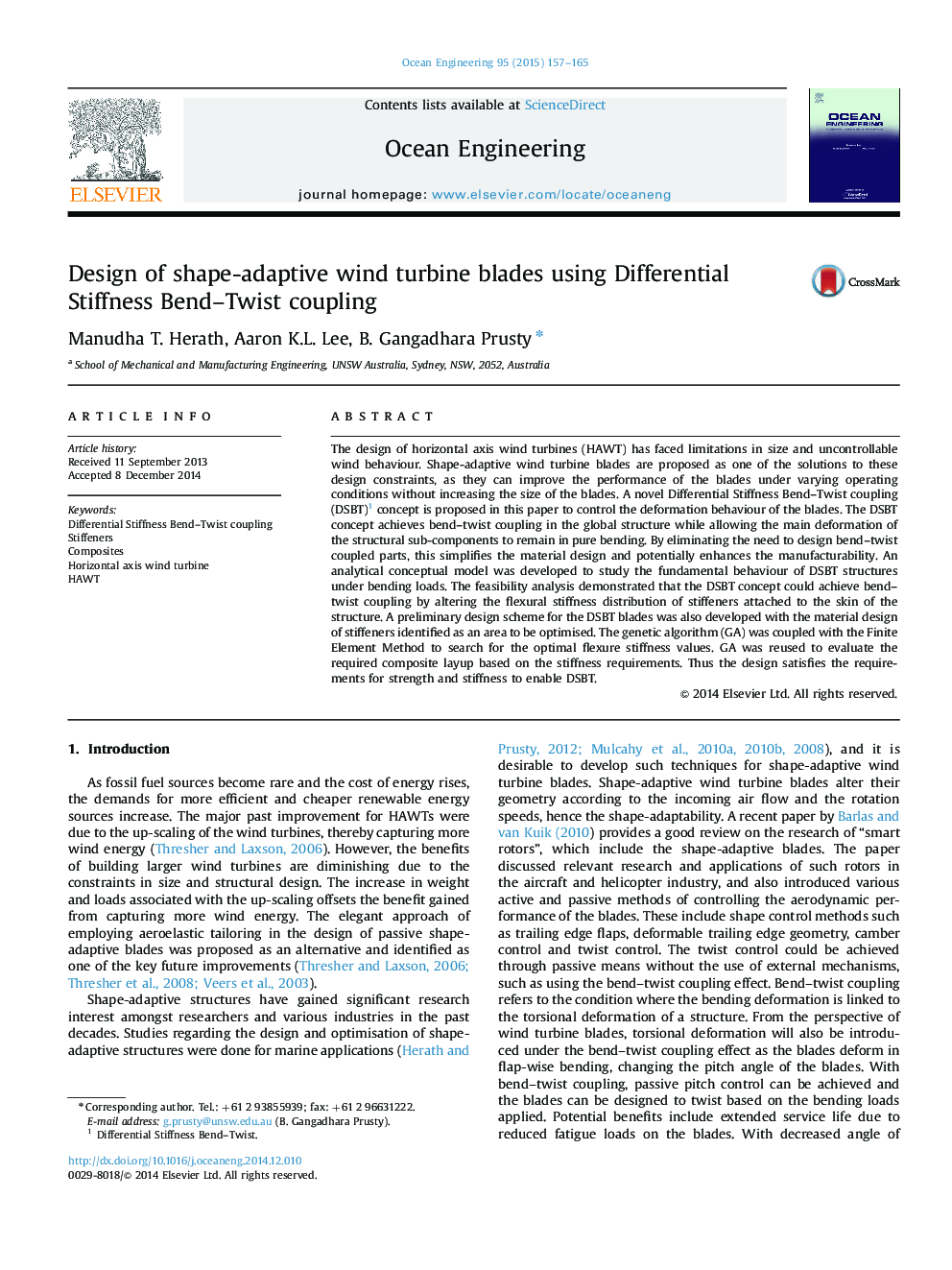| Article ID | Journal | Published Year | Pages | File Type |
|---|---|---|---|---|
| 8065880 | Ocean Engineering | 2015 | 9 Pages |
Abstract
The design of horizontal axis wind turbines (HAWT) has faced limitations in size and uncontrollable wind behaviour. Shape-adaptive wind turbine blades are proposed as one of the solutions to these design constraints, as they can improve the performance of the blades under varying operating conditions without increasing the size of the blades. A novel Differential Stiffness Bend-Twist coupling (DSBT)1 concept is proposed in this paper to control the deformation behaviour of the blades. The DSBT concept achieves bend-twist coupling in the global structure while allowing the main deformation of the structural sub-components to remain in pure bending. By eliminating the need to design bend-twist coupled parts, this simplifies the material design and potentially enhances the manufacturability. An analytical conceptual model was developed to study the fundamental behaviour of DSBT structures under bending loads. The feasibility analysis demonstrated that the DSBT concept could achieve bend-twist coupling by altering the flexural stiffness distribution of stiffeners attached to the skin of the structure. A preliminary design scheme for the DSBT blades was also developed with the material design of stiffeners identified as an area to be optimised. The genetic algorithm (GA) was coupled with the Finite Element Method to search for the optimal flexure stiffness values. GA was reused to evaluate the required composite layup based on the stiffness requirements. Thus the design satisfies the requirements for strength and stiffness to enable DSBT.
Related Topics
Physical Sciences and Engineering
Engineering
Ocean Engineering
Authors
Manudha T. Herath, Aaron K.L. Lee, B. Gangadhara Prusty,
